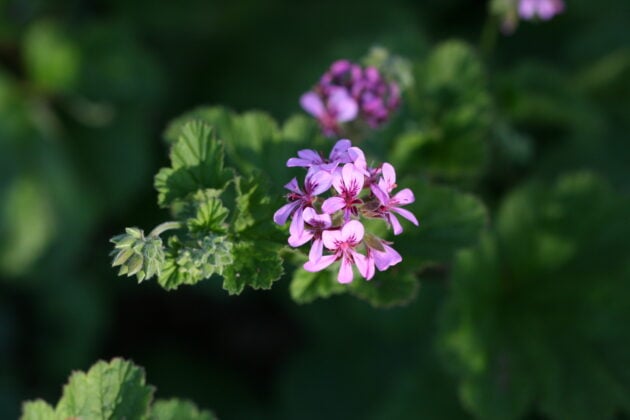Images from the garden beds at Edwin Flack Park. Credit: Natalie Simmons
The story of our Port Melbourne sporting grounds complex, Edwin Flack Park, has a less than impressive beginning. Before Melbourne Grammar School took ownership of the site in 2000, the land served as a rubbish tip. Today, thanks in no small part to the work of Head Horticulturist Natalie Simmons, Flack Park is a thriving habitat for birds, bees and indigenous plant life.
And, in combination with the pristine playing fields, Natalie’s new approach to landscape design has also improved the visual experience for players and spectators at the complex.
“We have large garden beds at Flack Park and they each have some challenging growing conditions,” Natalie says. “Most areas have a dry, sandy soil profile being only 600m from the beach, and it’s a very windy site. Weeds are a big problem on the northern border due to its proximity to weedy roadside verges bordering the Westgate Bridge. I’ve had to choose plants that can withstand these conditions, that stabilise the soil, suppress the weeds, while still being visually appealing, and using native and indigenous plants was the obvious choice.”
Gradually working to replace less suitable plants, Natalie has taken a different tactic for each of the major garden beds in the Park, from introducing some new varieties to revegetating other spaces altogether. An ongoing project and focus at Flack Park has been replacing many of the smaller lawned areas with garden beds.
“I’ve taken a naturalistic, patchwork approach with a mix of indigenous and native plants,” Natalie explains. “My initial ideas were inspired by garden projects in Melbourne municipalities that were steering away from native landscapes consisting of low maintenance monoculture plantings, and instead using a diverse native plant selection that were also easy to maintain. This concept provides an urban landscape that both looks better and is of greater benefit to flora and fauna communities.”
“From a design perspective, I wanted to see if it was possible to create naturalistic garden beds that resembled cottage gardens but solely used native Australian plants instead of exotic species,” she adds. “This idea then evolved into using mostly indigenous plants that were sourced as tubestock from the local indigenous nursery. It was years later that I learnt the greater significance of planting indigenous species at Flack Park with its proximity to Westgate Park.”
“Now native birds are making their homes here—birds we don’t often see elsewhere in this part of Melbourne.”
Natalie Simmons
Through the sourcing of locally indigenous plants, Natalie is connected to a volunteer organisation that cares for and revegetates nearby Westgate Park. “We’ve also seen that Flack Park is becoming a corridor for bees and birds all the way from Port Melbourne through to the Botanic Gardens,” Natalie says. “It’s become a vital link in their habitat.”
Natalie makes a distinction between locally indigenous plants—those that are endemic to the Melbourne sand belt—and native plants, which grow more widely across Australia, each offering their own advantages.
“Some people have this idea that native plants are boring, but they’re perfectly suited to the conditions in a place like Flack Park” she explains. “And they’re beautiful!”
“These native and indigenous gardens beds are evolving all the time,” she says. “Many of the flowering, herbaceous species self-seed each year, filling out the beds with new plants. Unlike many exotic species, they tend to go dormant in the summer, then come to life with the rain in winter.”
“It’s amazing for the soul to work in a garden like this,” Natalie adds. “It’s so visually stimulating, and it gives you a sense of peace.”





















